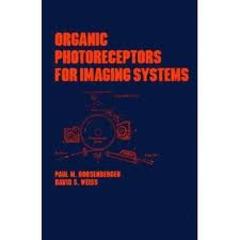
Organic Photoreceptors for Imaging Systems
Paul M. Borsenberger, David F. Weiss
(1993) xvi + 447 pages
This unique reference covers in detail the preparation and application of current and emerging organic materials used as xerographic photoreceptors, emphasizing the photoelectronic properties of organic solids and evaluating their potential use in xerography. Reviewing the development of xerography and the steps in the xerographic process, Organic Photoreceptors for Imaging Systems summarizes the properties, advantages, and disadvantages of various classes of materials used as photoreceptors … descnbes methods of characterizing the sensitometry of xerographic photoreceptors …examines the physics and chemistry of photogeneration and charge transport processes . . . elucidates the sensitometry of different classes of organic materials . . .and much more!
With over 1750 recent bibliographic citations and more than 270 explanatory tables and figures, Organic Phdoreceptors for Imaging Systems is a practical resource for imaging scientists, optical engineers and physicists, organic chemists, materials scientists, and graduate-level and continuing-education students in these disciplines. The scope of this subject is such that it is limited the treatment to properties relevant to xerography. AC phenomena and charge transport in crystalline solids are not discussed. Spectroscopies, synthetic techniques, and chemical methods of characterization are discussed only in specific cases. Finally, photoreceptors used in current applications are not reviewed, nor is the patent literature discussed. While there are many references to patents in the book, the coverage is not intended to be inclusive.
Contact us at info@electrostatic.com
 Electrostatic Applications
Electrostatic Applications